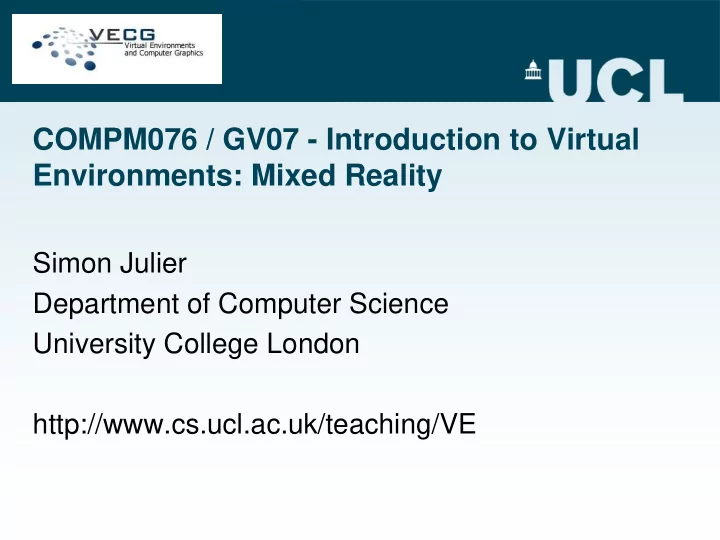

Tracking System Summary • Reliable and accurate tracking is important • Wide-area tracking systems aren’t good enough • Hybrid and computer vision-based systems are in the works • Global coverage is not here yet 74
Display Techniques • Introduction • Display Systems • Tracking Systems • Display Techniques • Interaction Methods 75
Building an AR System Interface 76
User Interfaces • To be of any use, the user has to understand the information which is being shown to them • However, there are several issues we have to grapple with, including: – Environmental effects – Density of information – Occlusions – Unambiguous labelling 77
Annotation and Labelling • One common issue is that we want to label the environment • However, simple strategies like putting labels at centroids isn’t good enough – need to look at the “screen space” of objects 78
Labelling The Environment • One approach is to use view management – Keep track of where the 3D objects project onto the screen – 2D annotations are laid out so that: • They fit in or near the space of the object • They do not interfere with one another • The temporal placement of annotations is controlled using a finite state machine
Labelling the Environment Work out projection of objects onto display
Labelling the Environment Parameterise unoccupied space
Labelling the Environment • The label location strategy is a finite state machine
Labelling the Environment Place annotations into free areas
Adaptive Label Management
Depth Estimation and Depth Ordering • We often want to know the order or range of virtual objects relative to the environment • Stereoscopic cues are of limited use • Secondary cues tend to bias virtual object further away than real objects • Various supplementary cues can be provided to convey depth information
Viewing Occluded Objects Threat Location Threat location User 86
“X-Ray” Vision Through Display Styles 87
Before 88
After 89
Developed Adaptation to Ambient Conditions • Color of text is function of background over which it is drawn – Algorithms identified by evaluation study at VaTech • Therefore, the colour of the augmentation has to change based on scene composition – Camera views scene – Color and intensity processed to Camera change label colors
Developed Adaptation to Ambient Conditions Label (“Parking Lot”) changes color to contrast with background
Registration Errors Can Be Confusing 92
Reduce Effects by Adapting the Display Increasing registration error 93
Bounding Regions for Objects M(k) = f(M 1 (x 1 (k)), … ,M t (x t (k))) ^ x i (k)=[x i (k), X i (k)] y(k)= [ ŷ(k), Y(k)] p’ P p Screen Head World • For each vertex in object: – Project each vertex through projection equations to work out pixel position – Calculate mean and 1 σ covariance ellipse due to registration errors – Approximate ellipses by set of points – Calculate bounding regions defined by these ellipses
Registration Error Adaptation Target window Target designated 95
Registration Error Adaptation Error bounds Target window Target registration error region overlaps distracters 96
Registration Error Adaptation Calculate overlap of target and distracter error regions 97
Registration Error Adaptation targetObject is in the middle Add aggregate representation and text message 98
Dealing With Information Overload 99
Lots of Data is Extremely Confusing 100
Recommend
More recommend